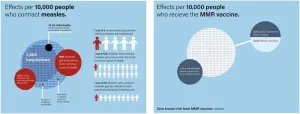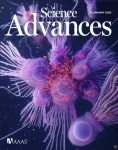(Press-News.org) Irvine, Calif., Jan. 8, 2025 — A University of California, Irvine-led research team has discovered intricate molecular mechanisms driving the RNA processing defects that lead to Huntington’s disease and link HD with other neurodegenerative disorders such as amyotrophic lateral sclerosis, frontotemporal lobar dementia and Alzheimer’s disease.
The findings may pave the way for neurodegenerative disorder researchers to collaborate and share therapeutic strategies across diseases, opening additional avenues for treatment.
While it’s known that HD is caused by an abnormal expansion of cytosine, adenine and guanine nucleotide repeats in the DNA of the gene responsible for HD, how this mutation interferes with cellular functions is highly complex.
The study, recently published online in the journal Nature Neuroscience, reveals the interplay between two key regulators of RNA processing. Binding of both the RNA-binding protein TDP-43 and the m6A RNA modification chemical tag has been found to be altered on genes that are dysregulated in HD. Further, TDP-43 pathology, classically associated with ALS and FTLD, is found in diseased brains from HD patients.
RNA modifications and how they control RNA abundance to lead to disease is an emergent and challenging area of biological research. “Our findings offer new insights into the role of TDP-43 and m6A modifications in contributing to defective RNA processing in HD. This enhanced understanding highlights their potential as therapeutic targets, which are major areas of research for other neurological disorders. Drugs developed to interact with these pathways could offer new hope for slowing or even reversing neurodegeneration in HD, ALS and other diseases where TDP-43 dysregulation is significant. This research is very important because it uses clinically relevant model systems to understand and elucidate novel RNA-based mechanisms for aberrant gene regulation in HD,” said co-corresponding author Leslie Thompson, Ph.D., UC Irvine Chancellor’s Professor and Donald Bren Professor of psychiatry & human behavior as well as neurobiology & behavior.
Led by UC Irvine assistant project scientist Thai B. Nguyen, the team used advanced genomic and molecular biology techniques to explore how m6A RNA modifications serve as landmarks directing TDP-43 to regulate crucial RNAs. Utilizing invaluable tissue samples from global brain banks, the study sheds light on a process essential for accurate RNA splicing – a cornerstone of proper gene expression.
The researchers discovered that in both HD mouse models and human patients, the mislocalization of TDP-43 and alterations in m6A RNA modifications disrupt TDP-43’s ability to bind to RNA correctly. This disruption leads to abnormal RNA processing and splicing errors. Further analysis revealed that these irregularities align with widespread gene disruptions, particularly in the striatum, a brain region significantly impacted by HD-related neuronal dysfunction.
“By targeting key processes like RNA splicing and modification, we not only advance our understanding of the molecular disruptions behind HD but also open the door to potential new treatments for neurodegenerative diseases more broadly. It was a really important collaboration to bring chemical and genomic tools from my lab and merge them with Leslie’s powerful and robust model systems to nail down this novel mechanism,” said co-corresponding author Robert Spitale, Ph.D., UC Irvine founding associate dean of research and professor of pharmaceutical sciences.
The UC Irvine scientists partnered with Clotilde Lagier-Tourenne, associate professor of neurology at Harvard University; Don Cleveland, chair and professor of cellular and molecular medicine at UC San Diego; and their research groups. Other team members included project scientists, faculty, and undergraduate and graduate students from UC Irvine, Columbia University, the Massachusetts Institute of Technology, the University of Auckland and Ionis Pharmaceuticals in Carlsbad. Click here for a full list.
This work was supported by the Chan Zuckerberg Initiative’s Collaborative Pairs awards program; National Institutes of Health grants R35 NS116872, R01 NS112503, R01 NS124203, R01 NS27036, R01 AA029124 and K22CA234399; and Department of Defense grant TS200022. Additional backing was provided by the National Institute of Neurological Disorders and Stroke under award number F31NS124293T32, the Dake Family Foundation, a Hereditary Disease Foundation postdoctoral fellowship, and a postdoctoral fellowship from the ALS Association.
About the University of California, Irvine: Founded in 1965, UC Irvine is a member of the prestigious Association of American Universities and is ranked among the nation’s top 10 public universities by U.S. News & World Report. The campus has produced five Nobel laureates and is known for its academic achievement, premier research, innovation and anteater mascot. Led by Chancellor Howard Gillman, UC Irvine has more than 36,000 students and offers 224 degree programs. It’s located in one of the world’s safest and most economically vibrant communities and is Orange County’s second-largest employer, contributing $7 billion annually to the local economy and $8 billion statewide. For more on UC Irvine, visit www.uci.edu.
Media access: Radio programs/stations may, for a fee, use an on-campus studio with a Comrex IP audio codec to interview UC Irvine faculty and experts, subject to availability and university approval. For more UC Irvine news, visit news.uci.edu. Additional resources for journalists may be found at https://news.uci.edu/media-resources.
END
UC Irvine-led team discovers potential new therapeutic targets for Huntington’s disease
Molecular mechanisms revealed that drive RNA processing defects leading to disorder
2025-01-08
ELSE PRESS RELEASES FROM THIS DATE:
Paul “Bear” Bryant Awards 2024 Coach of the Year finalists named
2025-01-08
HOUSTON, January 8, 2025 — Eight active college football coaches make up the American Heart Association’s 2024 Paul “Bear” Bryant Coach of the Year Award finalist list. The award is given each January to a college football coach for contributions that make the sport better for athletes and fans alike by demonstrating grit, integrity and a winning approach to coaching and life – both on and off the field. The Paul “Bear” Bryant Coach of the Year Award is the only college football coaching honor ...
Countering the next phase of antivaccine activism
2025-01-08
In a recent essay, pediatrician-scientist Peter Hotez proposes a focus on local data, improved benefit-risk communications, actively countering health disinformation, and state-level action to address antivaccine sentiment in the U.S.
Anti-vaccine sentiment isn’t going away any time soon. In a new opinion article published January 8 in the open-access journal PLOS Global Public Health, Prof. Peter Hotez from Baylor College of Medicine, outlines key actions to stem the momentum of anti-vaccine advocates in the U.S. over the next five years.
Anti-vaccine activities in the U.S. transformed to become a politically charged movement ...
Overcoming spasticity to help paraplegics walk again
2025-01-08
Electrical stimulation of the spinal cord is a promising strategy for reestablishing walking after spinal cord injury, recent studies show. But for patients suffering from muscle spasms, the stimulation protocols have a limited effect due to the unpredictable behaviour of involuntary muscle stiffness related to spasticity. Muscle spasticity affects almost 70% of spinal cord injured patients
Now, scientists at EPFL, Università San Raffaele and Scuola Sant’Anna have found a promising way to address and reduce muscle spasticity in patients with incomplete spinal cord injury. ...
Tiny microbe colonies communicate to coordinate their behavior
2025-01-08
A new study published in Science Advances reveals evidence of electrical signaling and coordinated behavior in choanoflagellates, the closest living relatives of animals. This elaborate example of cell communication offers key insights into the early evolution of animal multicellularity and nervous systems.
Researchers from the Burkhardt group at the Michael Sars Centre, University of Bergen, uncovered a remarkable diversity of behaviors within the rosette-shaped colonies of the choanoflagellate Salpingoeca rosetta - and the small organisms held even more surprises. “We found communication among the cells of the colonies, which regulates shape and ciliary beating across the rosette,” ...
Researchers develop new technology for sustainable rare earth mining
2025-01-08
Ion-adsorption rare earth deposits (IADs) are primary sources of heavy rare earth elements (HREE), supplying over 90% of the global demand for HREE. However, the current ammonium-salt-based in-situ mining technique has led to severe environmental impacts.
To facilitate sustainable REE mining, Professors ZHU Jianxi and HE Hongping’s team from the Guangzhou Institute of Geochemistry of the Chinese Academy of Sciences (CAS) has developed a green and efficient electrokinetic mining (EKM) technology.
Their work was published in Nature Sustainability on Jan. 6, 2025.
To address the challenges of sustainable and efficient REE extraction, ...
Words activate hidden brain processes shaping emotions, decisions, and behavior
2025-01-08
In an unprecedented new study in the journal Cell Reports, researchers have shown neurotransmitters in the human brain are released during the processing of the emotional content of language, providing new insights into how people interpret the significance of words.
The work, conducted by an international team led by Virginia Tech scientists, offers deeper understanding into how language influences human choices and mental health.
Spearheaded by computational neuroscientist Read Montague, a professor of the Fralin Biomedical Research Institute at VTC and ...
Understanding survival disparities in cancer care: A population-based study on mobility patterns
2025-01-08
A recent study published in Health Data Science, led by Dr. Fengyu Wen from the Institute of Medical Technology at Peking University Health Science Center and Professor Luxia Zhang from the National Institute of Health Data Science at Peking University, reveals significant survival disparities among cancer patients depending on their mobility patterns for medical care.
The study analyzed data from over 20,000 cancer patients in Shandong Province, China, to assess the impact of intra-city, local center, and national center mobility patterns on survival rates. Patients who traveled to local or national healthcare centers had higher five-year survival ...
Common sleep aid may leave behind a dirty brain
2025-01-08
Getting a good night’s sleep is a critical part of our daily biological cycle and is associated with improved brain function, a stronger immune system, and a healthier heart. Conversely, sleep disorders like insomnia and sleep apnea can significantly impact health and quality of life. Poor sleep often precedes the onset of neurodegenerative diseases and is a predictor of early dementia.
New research appearing in the journal Cell describes for the first time the tightly synchronized oscillations in the neurotransmitter norepinephrine, ...
Plant cells gain immune capabilities when it’s time to fight disease
2025-01-08
LA JOLLA (January 8, 2025)—Human bodies defend themselves using a diverse population of immune cells that circulate from one organ to another, responding to everything from cuts to colds to cancer. But plants don’t have this luxury. Because plant cells are immobile, each individual cell is forced to manage its own immunity in addition to its many other responsibilities, like turning sunlight into energy or using that energy to grow. How these multitasking cells accomplish it all—detecting threats, communicating those threats, and ...
Study sheds light on depression in community-dwelling older adults
2025-01-08
January 8, 2025—Marked variation in the prevalence of depression was found in a multisite sample of community-dwelling older adults in the United States reports a study by Columbia University Mailman School of Public Health. Until now, few studies, have examined the frequency of depression in community-dwelling older adults in the U.S. The study is published in the Journal of American Geriatrics Society.
Of the 2,900 participants studied, 6.2 percent had depression. Older adults who had a negative history of depression or had annual household incomes of $50,000 or greater were at significantly decreased ...
LAST 30 PRESS RELEASES:
The Ceramic Society of Japan’s Oxoate Ceramics Research Association launches new international book project
Heart-brain connection: international study reveals the role of the vagus nerve in keeping the heart young
Researchers identify Rb1 as a predictive biomarker for a new therapeutic strategy in some breast cancers
Survey reveals ethical gaps slowing AI adoption in pediatric surgery
Stimulant ADHD medications work differently than thought
AI overestimates how smart people are, according to HSE economists
HSE researchers create genome-wide map of quadruplexes
Scientists boost cell "powerhouses" to burn more calories
Automatic label checking: The missing step in making reliable medical AI
Low daily alcohol intake linked to 50% heightened mouth cancer risk in India
American Meteorological Society announces Rick Spinrad as 2026 President-Elect
Biomass-based carbon capture spotlighted in newly released global climate webinar recording
Illuminating invisible nano pollutants: advanced bioimaging tracks the full journey of emerging nanoscale contaminants in living systems
How does age affect recovery from spinal cord injury?
Novel AI tool offers prognosis for patients with head and neck cancer
Fathers’ microplastic exposure tied to their children’s metabolic problems
Research validates laboratory model for studying high-grade serous ovarian cancer
SIR 2026 delivers transformative breakthroughs in minimally invasive medicine to improve patient care
Stem Cell Reports most downloaded papers of 2025 highlight the breadth and impact of stem cell research
Oxford-led study estimates NHS spends around 3% of its primary and secondary care budget on the health impacts of heat and cold in England
A researcher’s long quest leads to a smart composite breakthrough
Urban wild bees act as “microbial sensors” of city health.
New study finds where you live affects recovery after a hip fracture
Forecasting the impact of fully automated vehicle adoption on US road traffic injuries
Alcohol-related hospitalizations from 2016 to 2022
Semaglutide and hospitalizations in patients with obesity and established cardiovascular disease
Researchers ‘listen in’ to embryo-mother interactions during implantation using a culture system replicating the womb lining
How changing your diet could help save the world
How to make AI truly scalable and reliable for real-time traffic assignment?
Beyond fragmented markets: A new framework for efficient and stable ride-pooling
[Press-News.org] UC Irvine-led team discovers potential new therapeutic targets for Huntington’s diseaseMolecular mechanisms revealed that drive RNA processing defects leading to disorder




